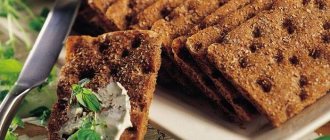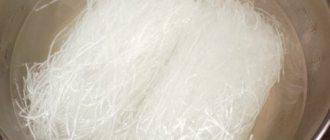Mozzarella is a classic Italian soft pickled cheese. The first mentions in literature about this type of cheese date back to the Renaissance. In 1570, mozzarella cheese was included as one of the ingredients in many dishes in the book of the then famous Italian chef Bartolomeo Scappi.
The name of the cheese comes from the Italian word “mozzare”, which means to cut: in the process of making this cheese there is a stage of cutting the raw materials. Mozzarella is very popular both in Italy and throughout the world.
Types of mozzarella
Content:
- Types of mozzarella
- Production technology
- Chemical composition
- Beneficial features
- Harmful properties
- How to select and store
- Use in cooking
- How to cook it yourself
- conclusions
The Campania region of Italy is considered the birthplace of this cheese. Only there you can buy one-day aged cheese - the Giornata variety, which is the prototype of all mozzarellas. Homemade mozzarella giornata cheese is made without adding salt, so it does not last long. To extend the shelf life of this cheese, it is stored with brine. But such cheese is no longer considered giornata.
The exquisite delicate taste of mozzarella has ensured its enormous popularity. Modern Italian manufacturers have modified its classic recipe. Therefore, there are currently many varieties of mozzarella on the shelves, which differ in appearance, raw materials used, the presence of additional ingredients in the recipe, as well as production stages.
By shape
Classic mozzarella always has an irregular shape, similar to a ball or a large egg. But there are other, no less popular forms. In Italy, mozzarella the size of a chicken egg is produced under the name bocconcini; cheese the size of a large cherry is known as chilengi, and small balls are called perlini, that is, pearls. Freshly made cheese has a fibrous, pliable texture, so many producers braid it into braids called trecci.
According to the recipe
The real Campagna cheese is made from the milk of black buffaloes, which is why it is called mozzarella di buffala Campagna. If the cheese is made from milk obtained from buffaloes of a different color or grown in other areas of Italy, then it is called mozzarella di latte di buffalo.
To increase the production volume of this cheese, the food industry began to make mozzarella from cow's milk or a mixture of buffalo and cow's milk. These types of mozzarella are accompanied by the prefixes “fior di latte” and “con latte di buffalo” in their names, respectively. Casein contained in cow's milk impairs the absorption of nutrients from cheese, so these types of cheeses are valued much less than buffalo cheeses and are much cheaper.
In recent years, cheeses made from skim milk, as well as smoked ones, have appeared. The taste of these products only vaguely resembles mozzarella and has nothing in common with the classic recipe.
Application
Since Mozzarella cheese is of Italian origin, then, of course, it is necessary to remember the traditional dishes of this country - pizza and lasagna, which cannot do without this important ingredient. This cheese melts well and gives dishes a unique, wonderful taste. Mozzarella can be used in salads, combined with olives and basil. A very famous salad with this cheese is “Caprese”, where Mozzarella goes well with tomato and basil.
Market Analytics
- Global cosmetics market 2021: an unprecedented test for the global cosmetics industry
- Top 10 Cosmetic Research and Development of 2021
- 2020 in the beauty industry – innovation without borders
Convenient search for beauty salons on our website
Beauty salons in Moscow Beauty salons in St. Petersburg Beauty salons in Ekaterinburg Beauty salons in Novosibirsk
Latest blog posts on our website
- Naturecream / Properties of the “Sunny” oil itself
- Naturecream / “Sugar” wrinkles - or what glycation can do
- Naturecream / Esterified oils
- Naturecream / Arnica - the magical plant of alchemists
- Naturecream / Tremella Extract - Snow Mushroom Detox for Skin
- Prostye-sovety / How to visually enlarge your lips with makeup
- Naturecream / Apricot kernel oil for face
- Naturecream / MATRIXYL3000 - the best skin elasticity stimulator
- Naturecream / SPF in Natural Oils
- Naturecream / Geranium (Pelargonium) oil for skin health and beauty
Latest forum topics on our website
- Natalya / How to properly make a gelatin mask?
- Mrs._Smith / Badly sunburned! What to do?((
- Ice / Is it necessary to combine fitness classes with a diet?
- Antonova / What can be used for hair loss?
- Radio operatorKat / Who was on a protein diet?
Other articles in this section
| Cheese Brynza Serbskaya This is an environmentally friendly and natural cheese. Its texture is dense and its color is pure white. The surface of the cheese is smooth, glossy with small cracks. It has a non-intrusive, faint smell with light notes of cream. The taste of Serbian Brynza is fresh, richly salty. Brynza has a long history. It was first made by an Arab merchant when the milk in his wineskin turned sour. Heat and bacteria led to the formation of feta cheese. |
| Red mold cheese One of the varieties of blue cheeses is red mold cheese. This cheese is already four thousand years old. The technology for preparing red mold cheese differs from the technology for preparing other cheeses in that it is washed in salt water or wine. This is the only difference. Although sometimes I use dyes during the preparation of this product. This cheese has an unusual pungent taste and a very strong aroma. There are several different types of this product. |
| Ryazhenka 1% This delicious fermented milk product is obtained as a result of fermentation processes of alcohol and lactic bacteria. The drink has a delicate taste, slight sweetness and a beige tint. The fat content of fermented baked milk can range from 1% (low-fat) to 9%. |
| Processed chocolate cheese Processed chocolate cheese is a dairy product that is made from rennet cheeses and cottage cheese with the addition of cocoa and other ingredients. The melting point of cheese is usually about 75-95 degrees. |
| Gouda cheese Gouda cheese is one of the most popular types of cheese. This is a hard cheese made from whole cow's milk. This type of cheese appeared a long time ago, back in the 12th century, its homeland is a small town in South Holland with the same name Gouda. There they first learned to make this type of cheese, and the city of Gouda is still a major cheese-making center in Holland. Gouda cheese has a fairly high fat content - about 48-51%. The raw material for making cheese is high-quality whole milk. |
| Green Pesto cheese Pesto cheese takes its rightful place among the most expensive and unusual varieties of cheese. The name comes from the name of the sauce, which contains butter, pine nuts and garlic. To prepare this type of cheese, many manufacturers use another cheese as a base - Parmesan. But Dutch chefs, in turn, decided to initially use the famous Pesto sauce to create this cheese product. |
| Grana Padano cheese Grana Padano cheese is the name of not just one type of cheese, but a whole group. They differ from other varieties both in appearance and geographical location. This is a hard cheese that is very popular in Italy and all over the world. The history of this cheese dates back to Ancient Rome, where it is considered one of the first cheese varieties. It is named after a river called the Po, which flows in Italy. A distinctive feature of this cheese is its grainy structure. Its taste is quite piquant, slightly salty, with a subtle nutty flavor. This cheese is based on cow's milk, which takes a full year and a half to mature. It is quite popular among true gourmets around the globe. And all thanks to its exquisite taste and aroma, which simply does not have anything like it. |
| Low-fat condensed milk with sugar Preserving milk by evaporation was invented by a resident of France, Nicola Apperou. At the time of evaporation, sterilization also occurred. This pastry chef worked in Paris and one day discovered a very interesting fact. When he boiled the juice, it began to be stored in canned form for quite a long time. After that, he began experimenting with milk. As a result, the confectioner realized that after it was boiled, it would be stored in tin jars for a long time. Tin cans were used because glass ones tended to burst when steam sterilized. |
| Sheep's milk A drink like sheep's milk has a slightly sweet and very delicate taste. This drink is good because it is very easily absorbed by the human body, and it has a very high nutritional value. Sheep's milk is one and a half times more nutritious than cow's milk. |
| Mountain Cheese When producing mountain cheese, according to an ancient recipe, milk collected from morning and evening milking is turned into cottage cheese and layered. What gives this cheese its spicy taste and great nutritional value is the fact that it is usually made from the milk of cows that graze high in the Alps or Pyrenees mountains, where short grass with a brownish tint grows. The cheese is fully ripened after four months. On the top of the Gorny cheese you can see eyes - even or elongated circles, but sometimes there may simply be no pattern. Fans of this cheese taste slightly bitter and slightly sour. This is due to the individual characteristics of its composition. |
Production technology
To make Italian mozzarella, they take fresh black buffalo milk and add a special thermophilic starter and rennet. The resulting solution is heated to curdle the milk. After this, the cottage cheese is infused in the whey for up to 8 hours.
The finished mass is heated again to separate it from the whey. The resulting curd mass is thoroughly kneaded until it forms a stiff dough. During the kneading process, the semi-finished product is heated several times to make its surface smooth and shiny.
The plastic mass is easily cut into small pieces, which are dipped into ice-cold salt water. The type of mozzarella (bocconcini, chilengi or perlini) depends on the size of the cut pieces. The remaining whey is used to make another popular type of Italian cheese, ricotta.
Mozzarella balls are usually left in this salty brine, packaged and sent for sale. Large pieces or braids are usually vacuum packed without brine.
Chemical composition
The chemical composition of mozzarella directly depends on its recipe. The most useful and nutritious variety is the Giornata variety, but it can only be purchased in the Campania region of Italy. In our country, the most useful type of this cheese that can be found on the shelves is mozzarella di buffala Campagna.
100 g of this soft cheese contains 22 g of protein and fat, and about 2 g of carbohydrates. Such a high content of proteins and fats makes cheese a high-calorie dairy product: its energy value is 300 kcal.
Buffalo milk proteins are complete in amino acid composition, so mozzarella contains all the essential amino acids, without which the synthesis of protein molecules necessary for humans is impossible. The content of essential amino acids in 100 g of buffalo cheese is so high that mozzarella can be considered a source of tryptophan (65% of the daily value), isoleucine (57%), valine (50%), leucine and threonine (40% each), methionine (29%) , lysine (24%), phenylalanine (23%).
Buffalo milk does not contain casein, a large protein molecule that can be a strong food allergen for some people. That is why real Italian mozzarella can be eaten even by those people who have an individual intolerance to casein.
Mozzarella is a fatty product. Its fat composition is represented mainly by saturated fatty acids and cholesterol. But you shouldn’t be afraid of this, because these lipids are part of cell membranes, steroid hormones and many enzymes. In addition, saturated fatty acids are sources of fat-soluble vitamins A, D, E, and K.
Mozzarella contains few carbohydrates, so they do not play a big role. The carbohydrates of this cheese are mainly represented by mono- and disaccharides (glucose, fructose, galactose, lactose, maltose, sucrose).
Buffalo milk mozzarella contains many vitamins, macro- and microelements.
Vitamins and minerals
| Name | Content per 100 g, milligrams |
| Vitamin A (retinol) | 0,179 |
| Vitamin B1 (thiamine) | 0,03 |
| Vitamin B2 (riboflavin) | 0,283 |
| Vitamin B6 (pyridoxine) | 0,037 |
| Vitamin B9 (folic acid) | 0,007 |
| Vitamin B12 (cyanocobalamin) | 0,0028 |
| Vitamin PP (nicotinic acid) | 0,104 |
| Vitamin D (calciferol) | 0,0004 |
| Vitamin E (tocopherol) | 0,19 |
| Vitamin K (phylloquinone) | 0,0023 |
| Potassium | 76,0 |
| Sodium | 626,0 |
| Phosphorus | 354,0 |
| Calcium | 505,0 |
| Magnesium | 20,0 |
| Iron | 0,44 |
| Manganese | 0,03 |
| Zinc | 0,011 |
| Selenium | 0,017 |
Most vitamins and minerals do not meet a person’s daily requirement for them, but are well balanced and available for absorption in the intestines.
Calculation of caloric content of a product per 100 grams
The calculation of the calorie content of 100 grams of product is based on previously known indicators of BZHU (abbreviation: proteins-fats-carbohydrates). The calculation method is the summation of these data (obtained by laboratory analysis and calculations) previously multiplied by a value equal to the energy released (calories) during their splitting. So, for example, 1 gram of protein or carbohydrate can release energy equal to 4.1 kcal, and fat a little more than 9. In calorie calculations, these numbers are usually rounded to whole numbers, as is the result itself.
Our example involves proteins - 17 grams, fats - 16.5 grams and carbohydrates - 3 grams, contained in 100 grams of product. Next we perform the calculation:
Energy value of 100 grams = 17 (proteins)*4 + 16.5 (fat)*9 + 3 (carbohydrates)*4 = 68 + 148.5 + 12 = 228.5 kcal
Our calculated calorie content is more than 50, but less than 250 kcal, which means that mozzarella cheese is a medium-calorie product with a high content of proteins, fats and low carbohydrates.
Beneficial features
Proteins and fats in the human body are plastic material for cells and are involved in metabolism. Antibodies, hemoglobin, blood plasma proteins, hormones and enzymes are synthesized from amino acids.
Mozzarella, with its frequent presence in the diet, saturates the body with complete protein, prevents the occurrence of anemia, decreased immunity, hormonal disorders, the appearance of pastiness and swelling, and impaired protein metabolism. Thanks to the participation of amino acids in the synthesis of protein-containing elements of the musculoskeletal system, mozzarella helps strengthen bones, joints and tendons.
Amino acids that make up the myelin molecule, the sheath of nerve endings, help improve brain activity, especially in people with memory impairment. Mozzarella is useful for athletes. The proteins of this cheese help build muscle mass, increase endurance, and improve the composition of synovial fluid - a lubricant for intra-articular surfaces.
B vitamins normalize digestion and restore damaged intestinal biocenosis. It is believed that regular consumption of mozzarella in food prevents the occurrence of cancerous tumors in the intestines.
It is very important to consume mozzarella for pregnant and lactating women, as well as children. In this case, we are talking only about cheese that is packaged without brine.
The benefits and harms of mozzarella cheese
Mozzarella contains almost the entire periodic table. Eating cheese provides the body with proteins and a number of vital macro- and microelements. In particular, casein protein supports the formation of muscle tissue. Potassium helps the heart work, sodium maintains water balance in the body. Iodine is good for the brain, nails and hair. Choline - maintains normal cholesterol levels.
Phosphorus, zinc and calcium help strengthen bones. Amino acids and vitamins such as B12 increase mental performance and physical endurance of the body.
Advertising - Continued below
Harmful properties
Despite the wide range of beneficial properties of mozzarella, its use is harmful for people with individual intolerance to lactose, casein (if the cheese is made from cow's milk) or food allergies.
Being a source of the amino acid phenylalanine, this cheese is prohibited for consumption by people with phenylketonuria.
If you have cardiovascular diseases or impaired renal excretory function, you should avoid eating cheese in brine. This can lead to increased blood pressure and swelling.
Its high calorie content makes mozzarella an undesirable product when preparing a diet for people on a diet.
Harm
The high calorie content and fat content do not allow Mozzarella cheese to be included in the diet of those people who are on a diet and adhere to the consumption of low-fat foods. Although it has many beneficial qualities, it can be harmful to those who suffer from lactose intolerance.
People with phenylkitonuria are strictly prohibited from consuming phenylalanine, and this amino acid is found in excess in this dairy product. Those who suffer from diseases of the cardiovascular system or impaired kidney function should also avoid Mozzarella cheese to avoid increased blood pressure or swelling.
How to select and store
Mozzarella is currently produced not only by Italian, but also by domestic producers. The composition of these cheeses is radically different, as is the production technology.
To enjoy the taste of real Italian mozzarella made from buffalo milk, you must give preference to manufacturers from Italy and adhere to certain selection rules:
- Cheese must be sealed. Evaluate the quality of the packaging: a self-respecting manufacturer always uses high-quality, odorless packaging materials.
- Study the label. The packaging must contain both the original manufacturer’s label and its translation into Russian. The correct label contains information about the manufacturer, composition and weight of the product, date of manufacture, conditions and shelf life.
- This product does not contain preservatives, flavors, dyes, or food additives.
- It is better to buy cheese in transparent packaging, through which the product itself and the brine can be seen. The color of buffalo mozzarella should be snow-white, without a yellow tint, and the brine should be free of flakes.
- Mozzarella should be stored in the refrigerator in the store, regardless of whether it is packaged in a vacuum or in another package. Freezing this product is unacceptable - it loses its texture.
- The shelf life at a temperature of +4°C is up to 2 months. If the packaging indicates a longer shelf life, this means that preservatives have been added to the product.
After opening the package, you need to smell the cheese: no sour or musty odors should be felt.
You should not buy mozzarella for future use. After opening the package, the shelf life of the product is reduced to 2 days (provided it is stored in brine at a temperature from +10°C to +15°C).
Choosing and storing cheese
The name of the product variety depends on the size of the balls:
- bocconcini - one large ball with a diameter of approximately 5 cm;
- chiliegini - several medium balls with a diameter of 1.5-2 cm;
- perlini - small balls with a diameter of 0.5-1 cm.
Be sure to read: Adyghe cheese: calorie content per 100 grams, composition, is it possible for weight loss, beneficial properties
The brine in which the cheese is stored is cloudy white. Thanks to this solution, the product does not dry out for a long time. The shelf life of natural mozzarella does not exceed 30 days, and for the products of some manufacturers it is even shorter.
Once the package is opened, the cheese must be consumed as soon as possible, as it cannot be stored in air.
Use in cooking
Italian mozzarella is most often consumed without heat treatment - as a snack, for example, with white wine. However, it is often added to dishes a few minutes before cooking, for example, pizza, lasagna or roast. Mozzarella is one of the main ingredients of traditional Italian Margherita pizza and Caprese salad.
This Italian cheese goes well with berries, olives, fresh vegetables, and herbs. Prepare with it:
- salads;
- snacks;
- pizza, including closed pizza (calzone);
- lasagna;
- ravioli;
- pot roast.
Caprese salad
To prepare it you will need tomatoes, mozzarella and basil. Tomatoes and cheese are cut into slices, basil leaves are added, seasoned with olive oil, sea salt and ground black pepper.
What wine goes with mozzarella?
Mozzarella boasts a soft, completely unsaturated and non-intrusive taste. Therefore, on the one hand, it is recommended to pair it with a white semi-dry wine with a soft, fresh taste, pleasant aroma and light sourness. It is believed that this particular type of cheese perfectly “knows how” to reveal the taste qualities of this drink.
On the other hand, there is a fairly large public that prefers to combine unleavened mozzarella with juicy red wine, including if the cheese goes with ham. Ultimately, the main thing is to enjoy the meal as much as the Queen of England, who is rumored to be served this cheese before every dessert.
How to cook it yourself
Mozzarella is easy to make yourself at home. To prepare it, you need to take 3 liters of raw milk, rennet (10 g), salt for brine (2 tbsp). Cow's milk can be used instead of traditional buffalo milk.
The milk needs to be heated to 40°C, add rennet previously dissolved in boiled water and stir thoroughly. This starter must be left to ferment for 20 minutes.
The thickened milk is cut into squares without removing it from the saucepan. After this, you need to throw everything into a colander with small holes, a sieve or cheesecloth to drain the whey. Place a press on top of the milk clot. This could be a dish with a two-liter jar filled with water placed on it.
After half an hour, the squeezed cheese must be placed in a container with brine and refrigerated. After 12-14 hours, the cheese can be eaten.











